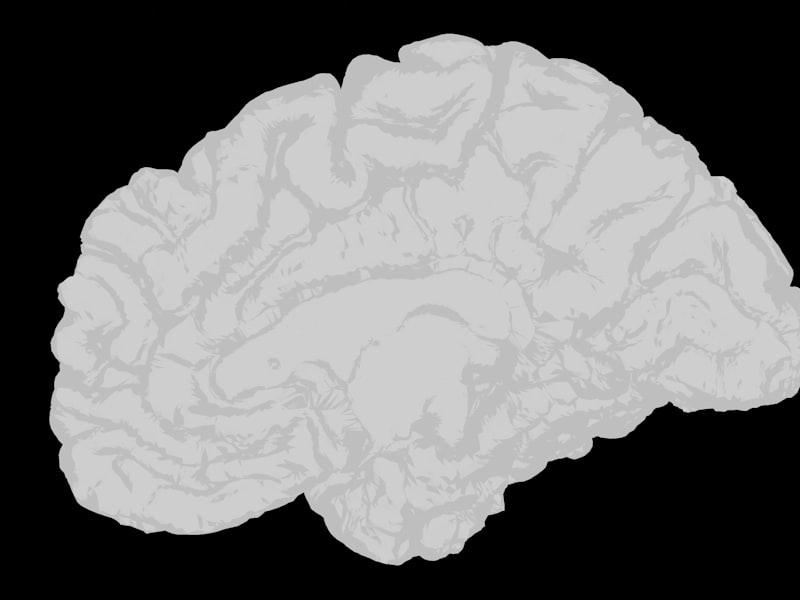The Science Behind Deep Work: How it Transforms Cognitive Performance

The Science Behind Deep Work: How it Transforms Cognitive Performance
Introduction: The Cognitive Revolution
In an age of constant distraction, the ability to focus deeply has become our most valuable and scarcest resource. But what exactly happens in our brains when we engage in deep work? This article explores the fascinating neuroscience behind focused work and reveals how sustained concentration literally transforms your cognitive architecture.
The Neurological Basis of Deep Work
Attention Networks in Action
Deep work activates three critical attention networks in your brain:
- The alerting network - Maintains vigilance and sustained attention
- The orienting network - Selects specific information from sensory input
- The executive network - Handles complex cognitive operations and decision-making
When you engage in deep work, these networks synchronize, creating a state of enhanced cognitive processing that simply cannot be achieved during fragmented, distracted work sessions.
“Deep work is not just about productivity—it’s about optimizing your brain’s neural machinery for peak performance.” - Dr. Adam Gazzaley, Neuroscientist
Myelin and Neural Efficiency
Perhaps the most profound neurological benefit of deep work is myelination—the process of building a fatty insulating layer around neural pathways. Research shows that focused practice and sustained concentration trigger increased myelin production, which:
- Increases signal transmission speed between neurons by up to 100 times
- Reduces signal leakage, making neural circuits more efficient
- Strengthens specific neural pathways associated with your area of focus
This explains why the quality of your focus directly impacts skill development. Distracted practice creates weak neural pathways, while deep, focused work creates superhighways of neural efficiency.
The Default Mode Network: Your Brain’s Enemy of Focus
When not engaged in focused work, your brain defaults to an interconnected web of brain regions called the Default Mode Network (DMN). This network:
- Activates during mind-wandering and self-referential thinking
- Consumes significant cognitive resources
- Is associated with unhappiness when overactive
Deep work effectively suppresses DMN activity, redirecting cognitive resources to the task at hand. This explains the sense of flow and reduced self-consciousness that accompanies deep concentration.
Neuroplasticity: Rewiring Your Brain Through Deep Work
The brain’s ability to reorganize itself by forming new neural connections—neuroplasticity—means that regular deep work sessions literally reshape your cognitive architecture.
How Deep Work Drives Structural Brain Changes
Research using functional MRI has demonstrated that sustained deep work:
- Increases gray matter density in regions associated with executive function
- Strengthens connections between the prefrontal cortex and other brain regions
- Expands working memory capacity through repeated neural recruitment
These structural changes explain why deep work feels difficult at first but becomes easier with practice. You are literally building a brain optimized for focused, complex thinking.
The Neurochemistry of Focus
Deep work triggers the release of several beneficial neurochemicals:
- Dopamine - The motivation and reward neurotransmitter that reinforces focus
- Norepinephrine - Increases alertness and attention to task-relevant stimuli
- Acetylcholine - Enhances neural plasticity and aids in maintaining attention
This neurochemical cocktail creates what scientists call “attentional state,” a condition where your brain’s resources are optimally allocated for learning and problem-solving.
The Cognitive Costs of Distraction
Understanding the neuroscience of deep work also reveals why distraction is so detrimental to cognitive performance.
Attention Residue
When you switch tasks, your brain doesn’t immediately follow. Dr. Sophie Leroy’s research on “attention residue” shows that part of your attention remains stuck on the previous task for up to 23 minutes after switching. This divided attention significantly reduces cognitive performance.
Cognitive Switching Penalties
Task switching incurs severe neurological costs:
- Up to 40% reduction in productive time
- Increased error rates of up to 50%
- Depleted glucose levels in the prefrontal cortex
These penalties help explain why deep work is exponentially more valuable than shallow work for complex cognitive tasks.
Training Your Brain for Deeper Focus
The good news is that focus, like a muscle, can be strengthened through specific neurologically-informed practices:
- Progressive training - Start with shorter deep work sessions and gradually extend them
- Attentional control practices - Meditation and mindfulness exercises strengthen the prefrontal cortex
- Environmental design - Create spaces that minimize sensory distractions
- Metabolic support - Proper nutrition and sleep optimize neural functioning
From Science to Practice: Building a Deep Work Protocol
Based on neuroscience research, here’s a research-backed protocol for optimizing your cognitive performance through deep work:
- Schedule - Block 90-minute sessions aligned with your circadian rhythms
- Prime - Use a consistent ritual to trigger your brain’s focus networks
- Eliminate - Remove all potential distractions before beginning
- Measure - Track depth metrics rather than just duration
- Recover - Allow for proper neural recovery between sessions
Conclusion: The Cognitive Competitive Advantage
In our increasingly complex knowledge economy, understanding and applying the neuroscience of deep work provides a significant cognitive advantage. By aligning your work practices with how your brain actually functions, you can achieve levels of productivity, creativity, and insight that remain inaccessible to those trapped in distracted work patterns.
Deep work isn’t just a productivity hack—it’s a neurologically optimal way of working that leverages your brain’s inherent design to achieve exceptional cognitive performance.
By making deep work a core practice in your professional life, you’re not just working more efficiently—you’re literally upgrading your brain’s operating system.
Dr. Maya Reynolds is a cognitive neuroscientist specializing in attention networks and productivity. Her research focuses on how work environments and practices affect cognitive performance.